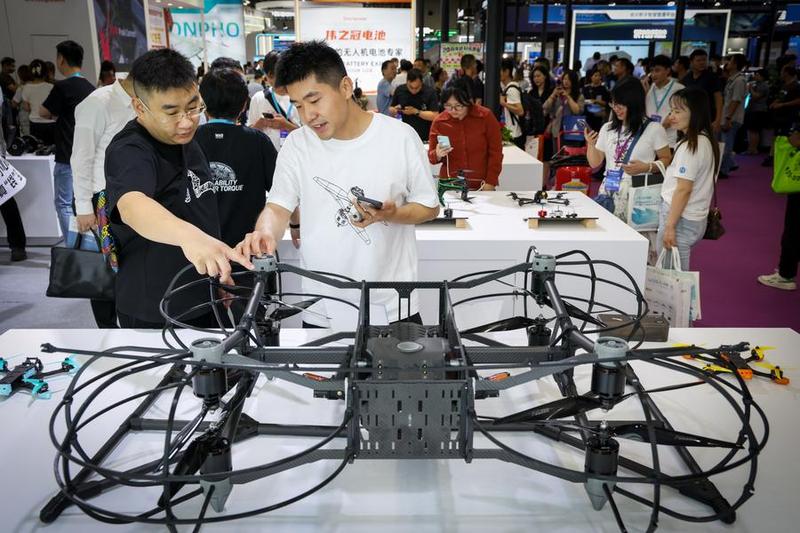AI-powered drones redefine China's skies as intelligence takes flight


SHENZHEN -- China's drone industry is soaring into a new era of cognitive capability, with artificial intelligence (AI) transforming unmanned systems from remote-controlled tools into autonomous problem-solvers.
At the ninth Drone World Congress that closed on Sunday in the southern Chinese city of Shenzhen, 825 enterprises showcased over 5,000 drone models. One spotlight belonged to "AI+" innovations redefining possibilities in infrastructure, heritage preservation, disaster response and urban governance.
DJI's Matrice 4E exemplified this shift during a 1,300-year-old Nankan Grottoes restoration project in Southwest China's Sichuan province. By autonomously mapping precision flight paths around the curved cliffside, the drone captured 18 GB of imagery, generating a detailed 3D model in 1.5 hours.
"The AI-driven workflow simplified what once required manual modeling, democratizing advanced applications," said Cui Yu, solutions engineer at DJI industrial applications, noting how integrated neural processors now enable real-time decision-making.
At power facilities, drones equipped with lightweight AI chips self-launch from nests, inspect equipment, and return autonomously for battery swaps. For disaster response, drones like Autel Robotics' fly into landslide zones, creating real-time 3D terrain models that cut rescue planning from hours to minutes.
"Imagine telling a drone to patrol a district: it designs routes, detects anomalies, and even collaborates with robots," said Autel's marketing director Liu Guozheng, outlining plans for "embodied AI" that coordinates cross-system missions.
Shenzhen has produced 48.2 percent more civilian drones in Q1 this year. Companies like Wisson Robotics merge biomimetic robotics with aerial platforms, deploying drones with flexible arms to replace navigation light bulbs on the Yangtze River or clear debris on photovoltaic panels during storms.
"Tactile AI allows zero-contact operations in high turbulence -- something unthinkable with rigid systems," explained Wisson's Cheng Hui, showcasing drones lifting objects multiple times their weight.
However, hurdles remain technically: battery life limits persist, electromagnetic interference disrupts navigation, and regulatory frameworks lag behind technological leaps. "Safety is non-negotiable," stressed Drone World Congress Secretary-General Yang Peng, acknowledging growing needs for data privacy safeguards.




































